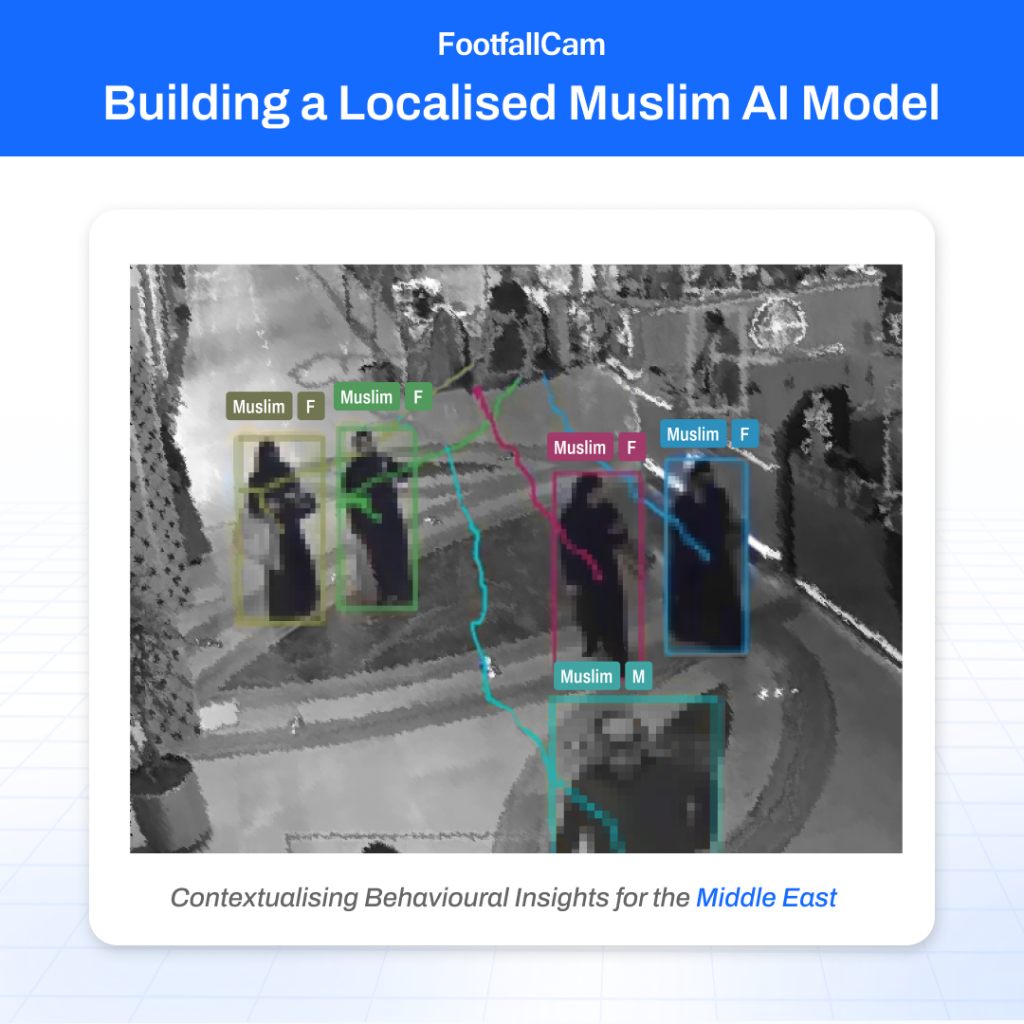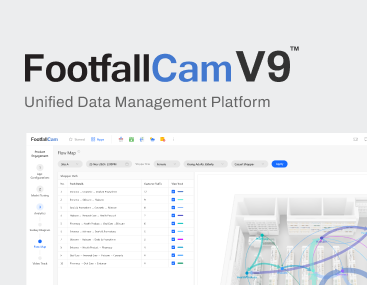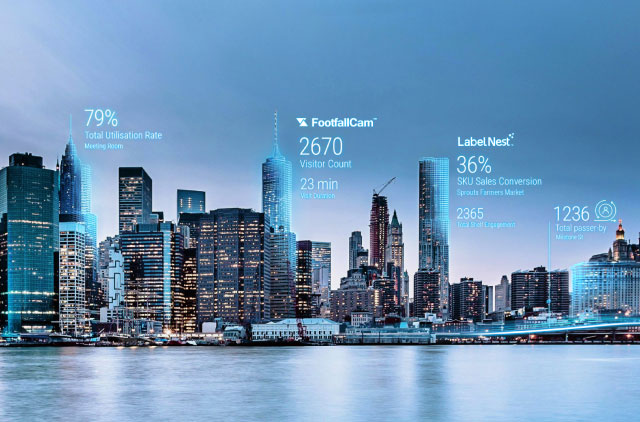Artificial Intelligence systems are only as good as the data they’re trained on — and when it comes to people behaviour in the Muslim-majority regions of the Middle East, a generic model simply isn’t enough. To truly understand, serve, and optimise services in this context, we need to build Muslim-localised AI models that reflect the cultural, religious, and operational nuances of these societies.

Why Localisation Matters in AI
AI models trained on generalised global datasets often fail to detect or interpret cultural-specific behaviours. In the Middle East, where daily routines, crowd dynamics, retail patterns, and even gender segmentation differ significantly, a lack of localisation leads to:
- Misidentification of group vs. family behaviour
- Inaccurate assumptions on peak hours during Ramadan, Friday prayers, or Eid
- Blind spots in gender-segregated spaces (e.g. mosques, universities, shopping zones)
- Underrepresentation of modesty norms, such as full-body garments affecting AI vision systems
Without localisation, AI doesn’t just underperform — it misunderstands the people it’s meant to serve.
Use Case: Muslim Behaviour Modelling in Public Spaces
Let’s take a mosque in Saudi Arabia or a shopping mall in Kuwait as examples. A localised Muslim AI model should be trained to understand:
- Prayer Time Movement Patterns: Surge before and after salah times, different crowd flows on Fridays
- Ablution Room Usage: Special zones and higher movement intensity pre-prayer
- Gender-Based Navigation: Respecting and modelling different flow patterns for men and women
- Ramadan-specific Trends: Late-night footfall, Iftar crowd surges, change in shopper engagement
A general AI model won’t pick up on these — but a localised Muslim AI model, trained with real-world Middle Eastern datasets, can.
What Does It Take to Build a Muslim AI Model?
1. Ground Truth Labelling by Local Annotators
Human-in-the-loop validation with Middle Eastern context is essential. Annotators must be aware of religious sensitivities, dress codes (abaya, hijab, thobe), and cultural norms.
2. Dataset Diversity: Gender, Ethnicity, Attire
Train AI vision to recognise people fairly — regardless of black abaya, white thobe, or face coverings. Avoid bias from underrepresented attire types in global datasets.
3. Calendar-Aware Intelligence
Incorporate Islamic calendar events (e.g. Ramadan, Hajj season) into predictive models to better forecast footfall and usage patterns.
4. Policy-Aware Tracking Modes
Some venues restrict full video recording due to privacy or religious reasons. AI must operate in privacy mode, counting without storing identifiable visuals.
Real-World Applications: What Can Muslim AI Enable?
- Smart Mosques: Zone occupancy, ablution area tracking, Friday crowd management
- Retail Analytics: Gender-specific aisle dwell time, campaign targeting for Eid or Ramadan
- Transport Hubs: Prayer room usage, adjusting crowd flow around Maghrib/Isha times
- Public Policy: Urban planning aligned with religious congregation patterns
A Step Toward Ethical, Contextual AI
At FootfallCam, our vision for Muslim-localised AI is part of a broader belief: context-aware AI is ethical AI. It’s not just about building better models — it’s about building the right ones for the communities we serve.
Check out the video here: Building a Localised Muslim AI Model – FootfallCam
#footfallcam #AI #MiddleEast #MuslimAI #RetailAnalytics #SmartMosque #Privacy #GDPR #DataIntegrity #EthicalAI











